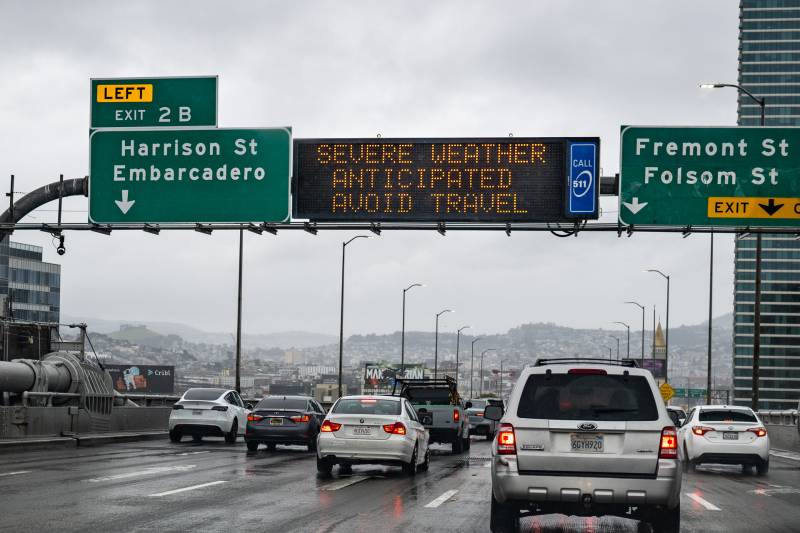Winds: Again via NWS Bay Area, we can expect a prolonged, very windy period from early Thursday afternoon through Friday morning, with sustained winds from 20 to 30 mph and gusts as high as 50 mph. With soils already deeply soaked, the high winds could blow down trees and create widespread power outages. So far this winter, millions of California residents — yes, millions — have lost power at some point due to stormy weather.
Flood watch: NWS offices throughout Central and Northern California issued flood watches earlier this week. For the Bay Area forecast area — a region stretching from Monterey and San Benito counties in the south up to Sonoma, Napa and Solano counties in the north — the flood watch continues through Sunday.
Flood locations: In addition to possible flooding of roadways and neighborhoods, including in parts of San Francisco and Oakland with persistent drainage problems, the NWS points to several areas south of the Bay Area as sources of particular concern, particularly those near the Salinas, Pajaro, Carmel and Big Sur rivers. The NWS’ California Nevada River Forecast Center is also projecting the Russian River at Guerneville will crest just above flood stage late Friday night. However, no major impacts are expected in that high-water forecast.
The center also forecasts that many points on Central Valley rivers and streams will reach monitor or flood stage in coming days, including the Sacramento, Mokelumne, Cosumnes, Tuolumne and San Joaquin rivers. One stream that experienced severe flooding in January, Bear Creek just outside the city of Merced, is expected to flood again.
Reservoirs: Several of the big reservoirs along the Sierra foothills — from Oroville Dam on the Feather River, south to Pine Flat Dam on the Kings River east of Fresno — have risen to the level where managers must release water to maintain space to provide flood protection for downstream communities. The California Department of Water Resources is expected to begin releasing water down the rebuilt spillway at Oroville Dam on Friday for the first time since 2019.

